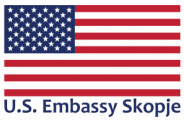Internet manipulation and misinformation tactics are increasingly gaining momentum in the 21st century. Disinformation is one of the key challenges we face. They are used as a powerful tool. Worldwide studies show that at least 18 countries have been facing the “fake news” syndrome in recent years, including the United States. North Macedonia is not excluded from this global trend.
The real news prepared in accordance with the standards of journalism and ethics, aim to explore, detect and inform the public about actual events. The fake news are aimed at beguiling the audience to reading, while achieving financial, political or other goals.
The Internet as a global network has enabled the existence of numerous fake news sites. These sites are being promoted in the global marketplace in countries such as Germany, Indonesia and the Philippines. According to research by IT experts, many of the online sites that produce and promote fake news come from Russia, Romania, but also from our country, the Republic of North Macedonia. The Internet is global, which is an obstacle for the attempts to regulate the online media in a regional context.
In Macedonia, the Internet and the online media environment, according to official data, are developing rapidly and at a rather intense pace. The reasons that attest to this trend are the readily available broadband-fast internet, low-cost technology, and good infrastructure for internet communication.
According to data from the State Statistical Office, in the first quarter of 2018, 79.3% of the households had Internet access at their homes. The share of households by type of settlement with landline broadband Internet in the total number of households in 2018 was 70.4%. In the first quarter of 2018, out of the total population aged 15-74, 79.2% used the Internet, and 68.7% used it daily or almost every day. Mobile phones or smartphones were the most used means for Internet access by users in this period, and mostly among those aged 15-24 (91.8%)[i].
History has previously recognized gossip and fabricated stories, marketed through the media. They are well documented. The digital age and sophisticated technology bring something else:
pollution of the space on a global scale
a complex system for creating, spreading and consuming fake news
numerous content and techniques that complement and enrich the contents of the posted fake news
many platforms that reproduce the content
intensive and dynamic communication systems that are used to quickly spread the news and its multipliers.
“Freedom on the Net”[ii] study, as a global medium in 2017, conducted in 65 countries by Freedom House, revealed interesting data. According to this study, as many as 30 governments use some sort of manipulation in order to disrupt the information that are disseminated through this global network. The number is increasing every year, and the Internet has no limits. Manipulation tactics include paid comments, trolls, so-called bots and fake news.
Political parties or other interest groups, governments, and even movements or organizations that spread dangerous theories, employ entire armies of “opinions for opinion”. Fake news are used as a tool by powerful politicians or other power players in order to discredit someone or something and gain political points. This resonates among the public as an emphasized division, which is why even members of same families cannot discuss politics, because thanks to the misinformation, they have different perceptions of reality. Social media and social networks, through their platforms, provide the bullhorns with which they communicate and attract their followers.
Fabricated stories are shared and commented on the public networks. It is devastating fact that misinformation much faster and much easier convinces the audience in its “truthfulness” than the relevant media. They penetrate deeply. The audience is not always able to make a distinction between the truth and the fabricated information. Fake news, on average, reach an audience of 1 500 people, six times faster than true news. This applies to all genres, from business news, terrorism, wars, science, technology, to entertainment. It is interesting to add that the political stories have the greatest success.[iii]
In the past three years (2014-2017), the Media Ethics Council of Macedonia has pointed out that the ethical and professional standards are mostly violated by the online media at an astonishing 79%. Fabricated data is not overlooked by other types of media as well, so among the electronic media the rate is 12.6%, while among the printed media the rate is 8%.[iv]
In addition to the direct impact, fake news pollution also has an indirect impact. It is difficult to measure the implications. The dissemination of fake news has a long-term impact.
Many surveys reveal that the media in Europe and North America are flooded with stories that point to Russian interference in domestic politics. Analyses indicate that much of the “fake news” campaigns are organised in Moscow.[v] On the other hand, the Russian side opposes these claims with Western “fake news” directed against them. The Russian Foreign Ministry is even planning to establish a new section on its website, which will be devoted to exposing “fake news” and “lies” about Russia.[vi]
In order to eliminate the impact of disinformation, it is necessary to:
detect the people who make the news and their motives
find the purpose of the message
find the interpreters who convey it, as well as how they infuse it with essential credibility
Fake news are a minor threat, but they require increased precaution. One of the ways to combat the negative occurrence of fake news is the attempt of professional journalists and media to expose such web sites by using their main journalistic tools, that is to say, by consulting several sources of information, showing the whole picture and context, as well as check the facts stated in the journalistic texts. Another tactic is media literacy which must be included in education since the earliest age.
Viki Ristoska Chadikovska
Master Candidate at FON, thesis “Fake news as political marketing function in RM”
Journalist with long-term experience
References:
[i] http://www.stat.gov.mk/pdf/2018/8.1.18.29.pdf
[ii] https://freedomhouse.org/report/freedom-net/freedom-net-2017
[iii] http://news.mit.edu/2018/study-twitter-false-news-travels-faster-true-stories-0308
[iv] http://semm.mk/komisija-za-zalbi-4/statistichki-pregledi/602-2018-2
[v] https://euobserver.com/political/143612
[vi] https://www.rferl.org/a/russia-putin-signs-fake-news-legislation/29828242.html


